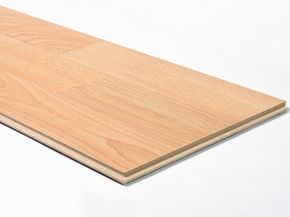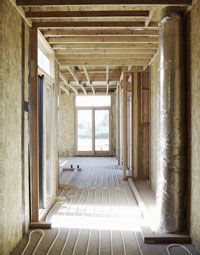In spite of their critics, laminate floors are quickly becoming one of the most popular flooring choices in the consumer market. They're are often less expensive than hardwood, stone or tile, but the popularly of laminates isn't all about cost. Laminate floors can replicate types of wood that would normally be too fragile for everyday use.
These floors have a wood-grain appearance and planks that are the same size and shape as wood floor planks, so they're a convincing substitute for hardwood. On top of that, they can last much longer than even sturdier woods can. Because laminate floors get their designs from photographic images rather than a physical layer of wood, people can choose the look of any wood they want without worrying about durability or price.
Advertisement
Laminate flooring was developed in Sweden in the 1980s, and it's come a long way since then. High-end laminates offer a textured appearance, so the finish looks realistic from up close as well as from afar. Original laminates don't have these finishes and tend to look more realistic from a distance. Laminate floors can replicate many types of wood, including all colors of oak, Brazilian cherry, mahogany, walnut, chestnut, hickory, maple, ash and pine, just to name a few. For people who want the look of more than one surface in their home, laminates can also mimic stone.
All of these traits make laminate flooring an attractive choice for people who want exotic and authentic looks in their homes. In this article, we'll explore what goes into making laminate floors and why their designs are so realistic. We'll also give you some tips for cleaning and maintaining laminates.


